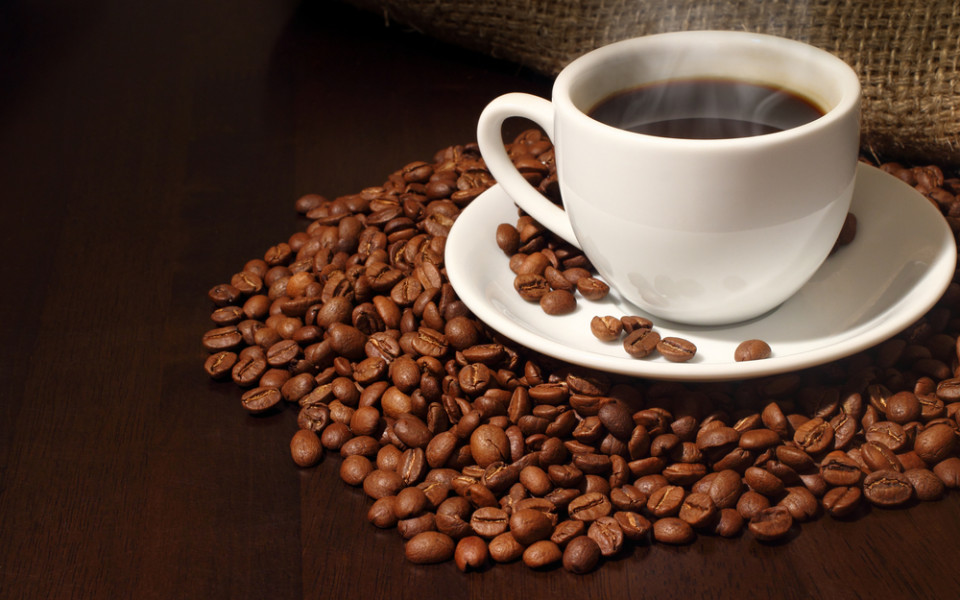The Ultimate Guide to Coffee Brewing Methods and Comparison
For coffee enthusiasts who already have one or two favorite brewing techniques, it might be time to switch things up and explore new methods. We’ve compiled a comprehensive guide featuring the best coffee brewing techniques, complete with images, instructions, and their respective pros and cons. This way, you can easily discover your next favorite brew.
Brewing methods are plentiful. To simplify your exploration, we’ve organized them by their operational principles: boiling method, immersion method, drip method, and pressure method. Additionally, we’ve included a few lesser-known techniques at the end for those seeking something unique.
Boiling Method
Brewing coffee is an easy and time-honored technique for making a robust cup of coffee. While it might not be the most sophisticated method, it’s incredibly straightforward to master.
1.Cowboy Coffee
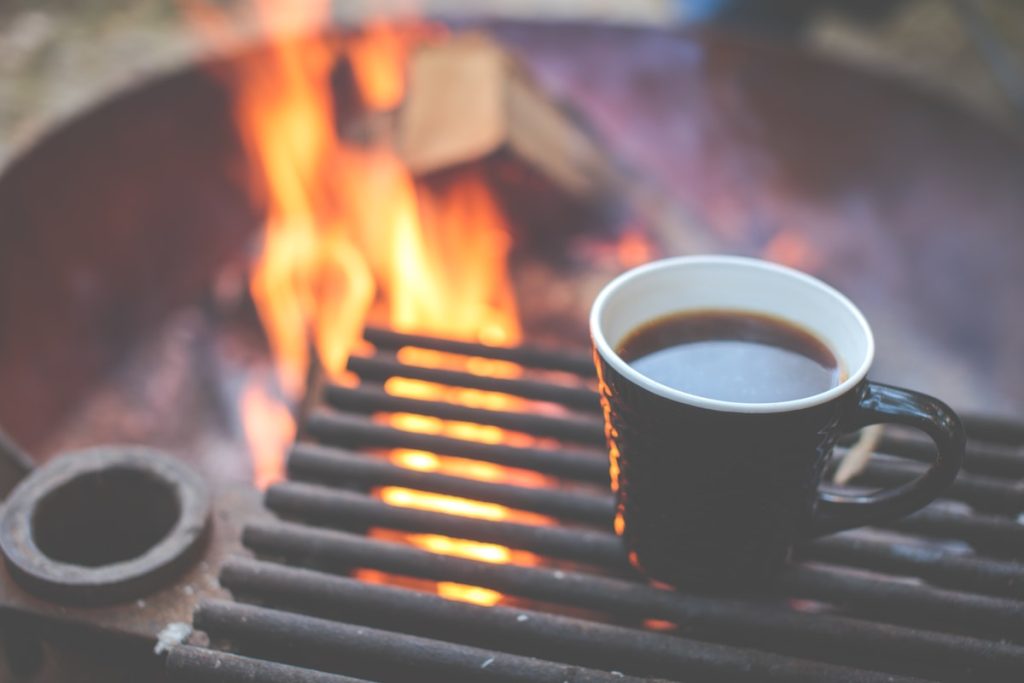
Cowboy coffee is an incredibly simple and budget-friendly method of making coffee. You can use any pot and virtually any heat source (including a campfire) to prepare it.
To brew cowboy coffee, add very coarsely ground coffee to boiling water. Let it boil for a few minutes, then take the pot off the heat and let it sit for a few seconds. After that, you can pour it into your cup and enjoy!
Grind size: Very coarse
Pros Cons
Easy to brew You might end up with some coffee grounds in your cup
Low cost The flavor isn’t the best
Highly portable
2.Turkish Coffee
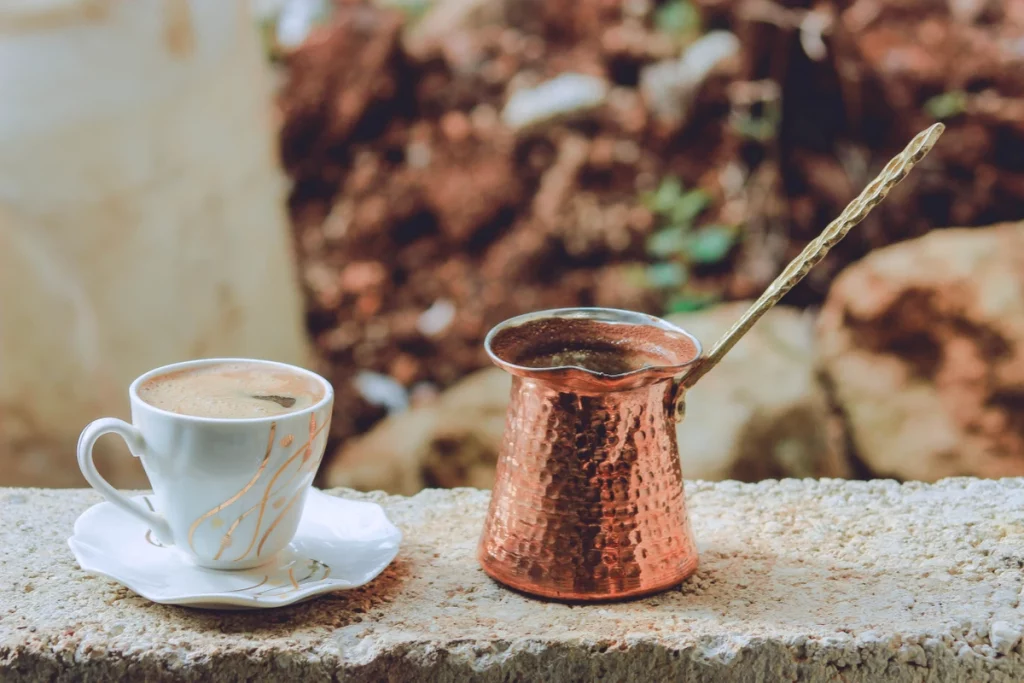
Turkish coffee is a traditional Middle Eastern brewing method that utilizes extremely fine coffee grounds. This technique produces a beverage that is rich, flavorful, and frothy.
To prepare it, combine the coffee grounds with sugar in a special long-handled pot known as a “cezve.” Heat the mixture until it begins to foam, then remove it from the heat. Repeat this process several times until you achieve a thick layer of foam.
Grind size: very fine
Pros Cons
Strong and dark with an intriguing texture May be too strong for some tastes
Requires specialized equipment
Not very portable
Immersion Method
Soaking coffee beans can help you extract a significant amount of flavor and caffeine. If you’re after a bold taste, consider these full immersion techniques that involve keeping the coffee beans in direct contact with water for at least a few minutes.
3.French Press
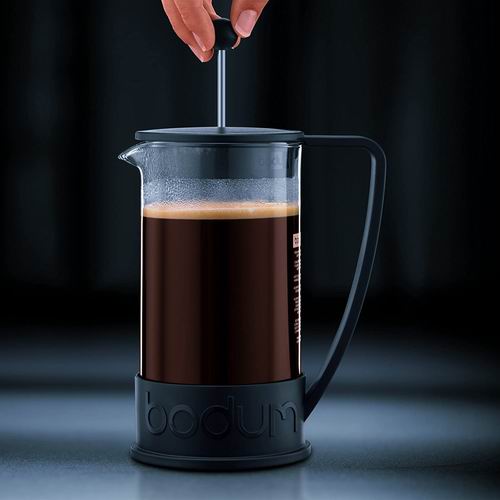
Making French press coffee is simple and fairly quick. It yields a rich, full-bodied coffee, making it an excellent method for brewing multiple cups at once.
To prepare French press coffee, add medium-coarse coffee grounds into the French press. Pour in boiling water and let it steep for three to four minutes. Then, press down the plunger and enjoy your coffee.
Grind size: Medium-coarse
Pros Cons
Easy to brew Often contains sediment
Rich, distinctive flavor May become bitter if over-steeped
Can brew several cups at once Not very portable
4.Cold Brew Coffee

Cold brew coffee is known for its low acidity and slight sweetness because it never gets heated. It’s simple to prepare but requires more time than traditional methods.
To make cold brew coffee, combine coarsely ground coffee beans with room temperature water. Allow the mixture to steep for several hours or overnight, depending on your preferred strength. After filtering, you can enjoy it directly or with some ice.
Grind size: Coarse
Pros Cons
Rich flavor Long brewing time required
Low acidity and slightly sweet
Easy to prepare
No special equipment needed
5.Drip Bag Coffee
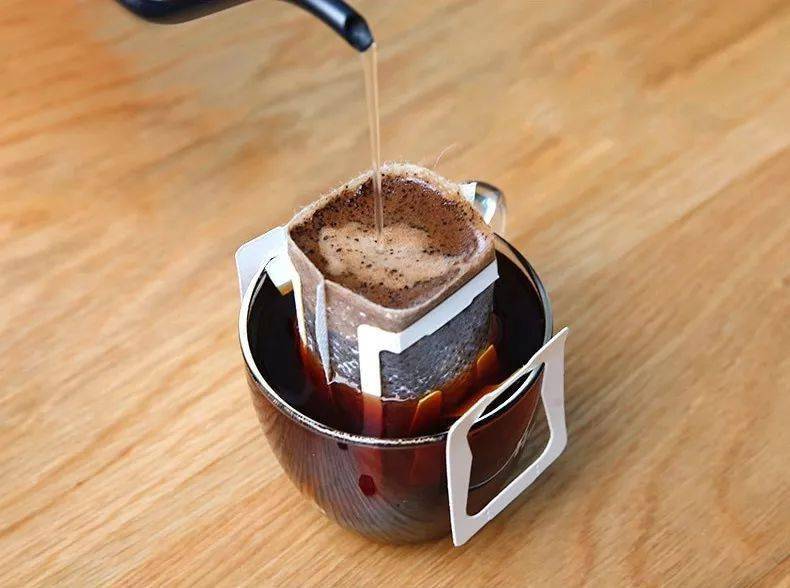
If you’re looking for a way to make your coffee brewing as straightforward as making tea, the coffee bag method might be just what you need. This technique involves using coffee grounds packed inside a soft bag, much like a tea bag. Simply pour boiling water over the coffee bag, let it steep for three to four minutes, then remove the bag and enjoy your coffee!
Grind size: Medium-fine
Pros Cons
Extremely easy to brew Lacks strong aroma
Cost-effective Cannot achieve top-tier coffee quality
Non-customizable
6.Siphon Coffee Maker
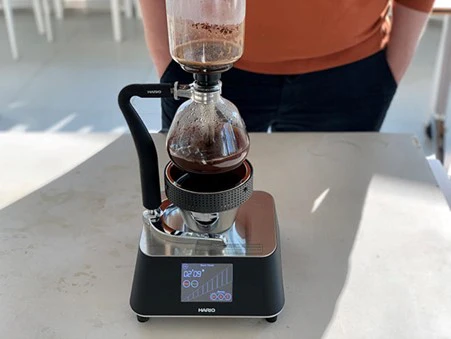
The siphon coffee maker is one of the most intricate and visually striking coffee machines. While they can be challenging to operate, when used properly, they yield a cup of coffee that is clear, smooth, and flavorful.
This type of coffee maker employs a heat-induced vacuum to draw water up into the coffee grounds. After brewing, the finished coffee is then drawn back down into the lower chamber of the siphon apparatus.
Grind Size: Medium-coarse
Pros Cons
Highly impressive Difficult to use
Produces clear, smooth, and flavorful coffee Requires expensive and specialized equipment
Challenging to clean
7.Instant Coffee/Espresso
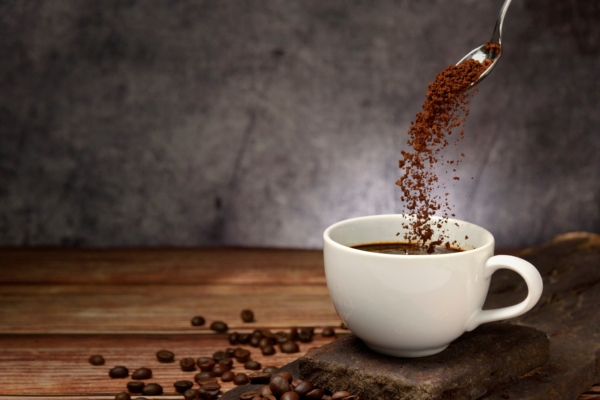
Instant coffee is perhaps the easiest brewing method on this list. It’s straightforward and inexpensive. However, it doesn’t yield the most flavorful or complex cup of coffee.
Instant coffee or espresso is made by dissolving dehydrated coffee granules in hot water. As the name suggests, this process is immediate and simple.
Grind size: Instant coffee granules
Pros Cons
Very quick and easy Not very flavorful or complex
Low cost Drip Method
No special equipment required
The drip method is very common. You’ll find it everywhere from restaurants to offices because it’s so straightforward.
8. Electric/Stove Leachate Filter
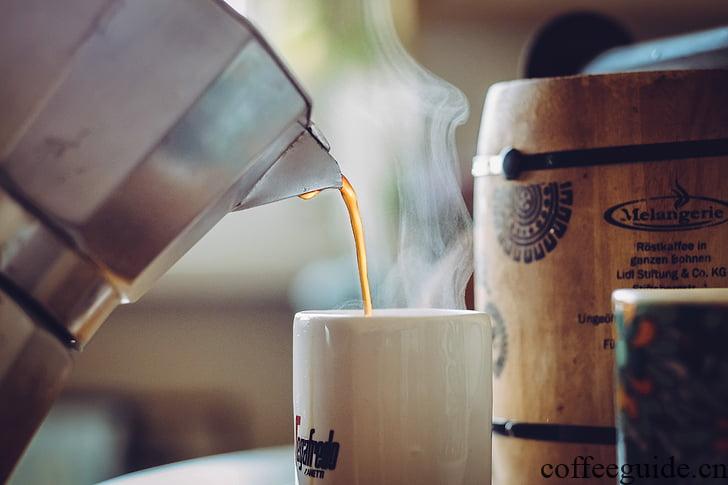
Percolators have been a favored method of brewing coffee for many years. Electric versions simply plug into an outlet, eliminating the need for a stove. On the other hand, stovetop models are ideal for camping or home use since they work on both stoves and open flames.
The way percolators function is by repeatedly cycling boiling water through coarse coffee grounds. The brewing process typically takes around 10 minutes, but if you prefer a milder cup of coffee, you can reduce the brewing time.
Grind Size: Coarse
Pros Cons
Easy to brew Can sometimes produce overly bitter or strong coffee
Highly portable
9.American Coffee Maker
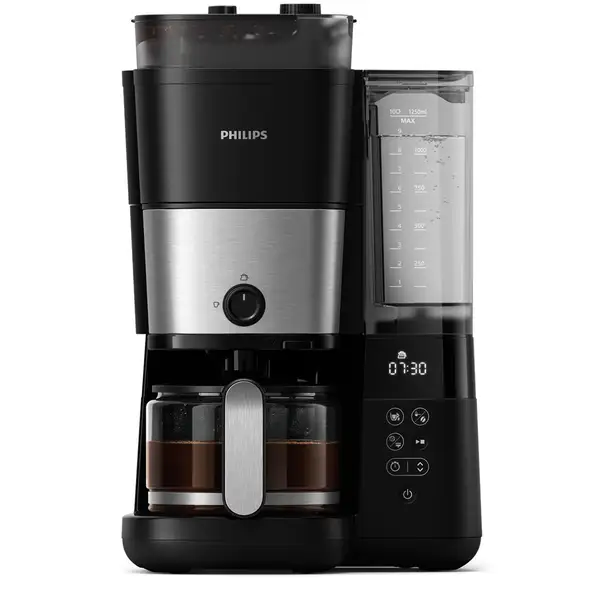
If you’re looking to brew coffee for multiple people, an American drip coffee maker is a popular and cost-effective option.
To use a drip coffee maker, you’ll typically need to add medium-ground coffee and water. The machine takes care of the rest, heating the water and dripping it over the grounds into a pot or carafe.
Grind size: Medium
Pros Cons
Easy to use and often automated Not ideal for brewing small quantities
Can brew multiple cups at once Flavor may not be very exciting
Usually keeps coffee warm for one or two hours
10.Manual brewing
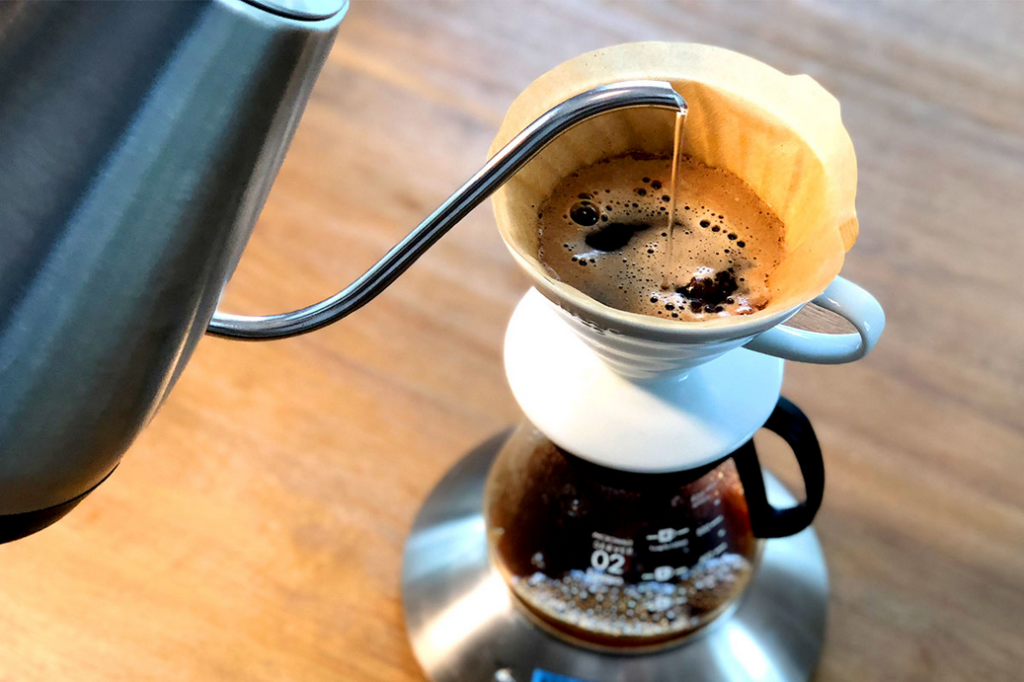
Basic pour-over kettles come in various sizes and designs, but they typically brew directly into your cup using a paper filter. The most popular brand is Melitta.
To brew pour-over coffee, place the dripper on top of your cup and add a paper filter. Then, add medium-ground coffee to the filter and pour hot water over it.
Grind size: medium
Pros Cons
Produces clear coffee without sediment or natural oils Usually requires buying paper filters
Easy to make a single serving Cannot make multiple cups at once
Low cost Paper filters may alter the taste of the coffee
Quick brewing time
11.Professional hand brewing
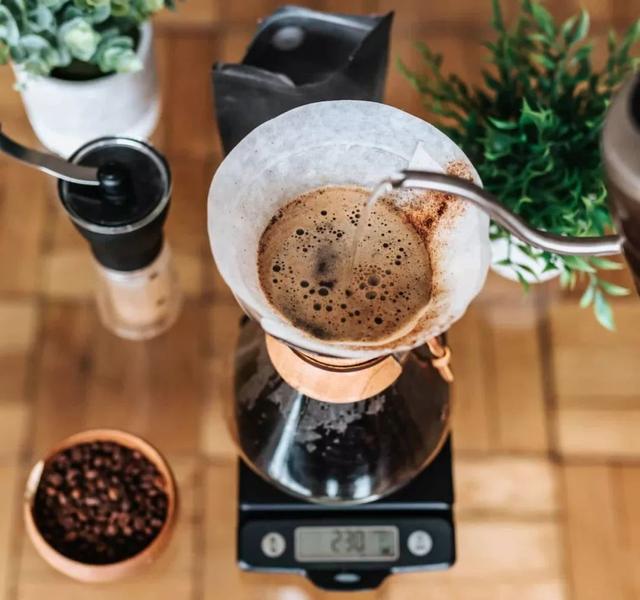
Many companies manufacture their own pour-over devices. Some of the most renowned brands include Hario V60, Kalita Wave, and Bee House, each offering a unique take on coffee brewing.
While the specific designs of these brands vary, they are generally as effective as any other pour-over method. Simply pour water over the cup, insert the appropriate filter paper, and add medium-ground coffee beans. Pour water on top and let it drip into the cup below.
Grind Size: Medium
Pros Cons
Easy to use Requires purchasing paper filters
Produces clear and rich coffee free of sediment or oils Brews only one cup at a time
Quickly brews a single cup Filter paper may affect taste
12.Chemex
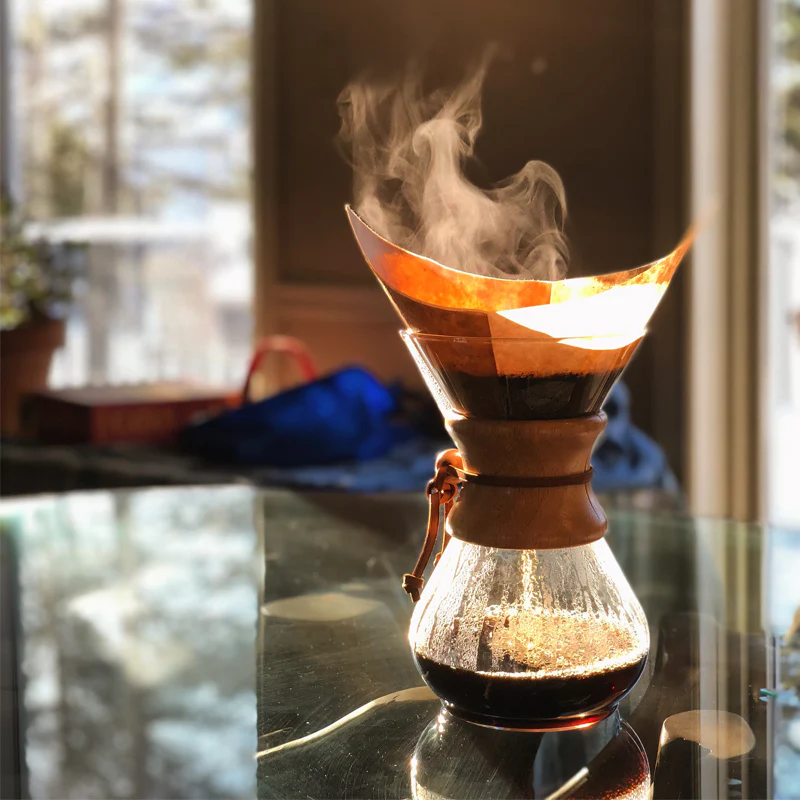
If you appreciate the flavor and texture of pour-over coffee but need to brew more than just a single cup, the Chemex might be an excellent option. This method involves pouring water into an elegant carafe.
To prepare Chemex coffee, place one of Chemex’s thick filters on top of the coffee maker. Fill it with medium-coarse coffee grounds and pour in hot water.
Grind size: Medium-coarse
Pros Cons
Elegant design Requires specialized equipment
Can brew multiple cups at once Filters are more expensive
Removes sediment and oils for a cleaner cup Quick brewing time
13.Clever Dipper
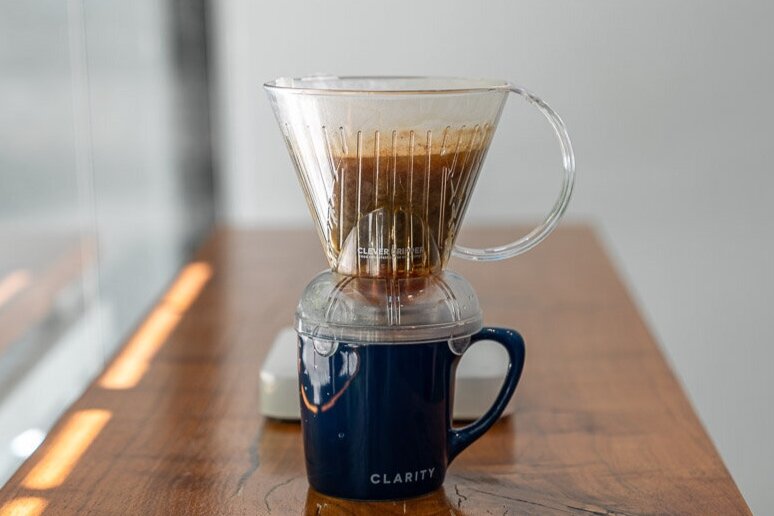
Although it looks like a standard pour-over device, the Clever Dripper blends features from both pour-over and immersion techniques. It includes a valve at the bottom that lets you steep coffee grounds in water before releasing the brewed coffee into your cup.
Pressure-based brewing methods generally need more machinery to function effectively. Most of these methods utilize pressure to quickly push water through the coffee grounds.Although it looks like a standard pour-over device, the Clever Dripper blends features from both pour-over and immersion techniques. It includes a valve at the bottom that lets you steep coffee grounds in water before releasing the brewed coffee into your cup.
The setup process resembles that of a typical pour-over. You place the Clever Dripper on your counter, insert a paper filter, and add coffee grounds. After waiting for three to four minutes, you position it over your cup, which activates the valve and allows the brewed coffee to flow out.
Grind size: Medium-fine
Pros Cons
Combines immersion and drip techniques Requires specific equipment
Provides better control over brewing
Extremely easy to use
Portable and affordable
Pressure Methods
Pressure-based brewing methods generally need more machinery to function effectively. Most of these methods utilize pressure to quickly push water through the coffee grounds.
14.Espresso Machine
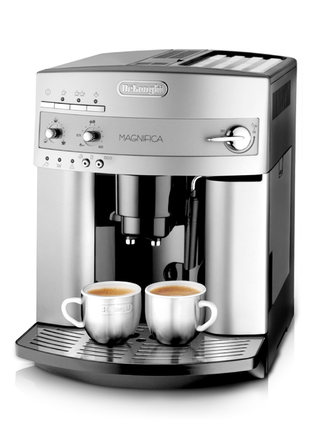
Espresso machines are pricey and complicated to use, but they’re essential if you’re after top-notch espresso. Regular cleaning and descaling are necessary to keep them running smoothly.
Espresso machines work by forcing high-pressure hot water through tightly packed coffee grounds in a filter. They come with varying levels of automation, though a good understanding of the brewing process is generally needed to make quality coffee.
Grinding size: fine
Pros Cons
Produces premium, rich espresso Requires highly specialized equipment
Offers varying degrees of automation Expensive
Allows control over the brewing process Harder to operate
Needs frequent cleaning and descaling
15.Moka Pot
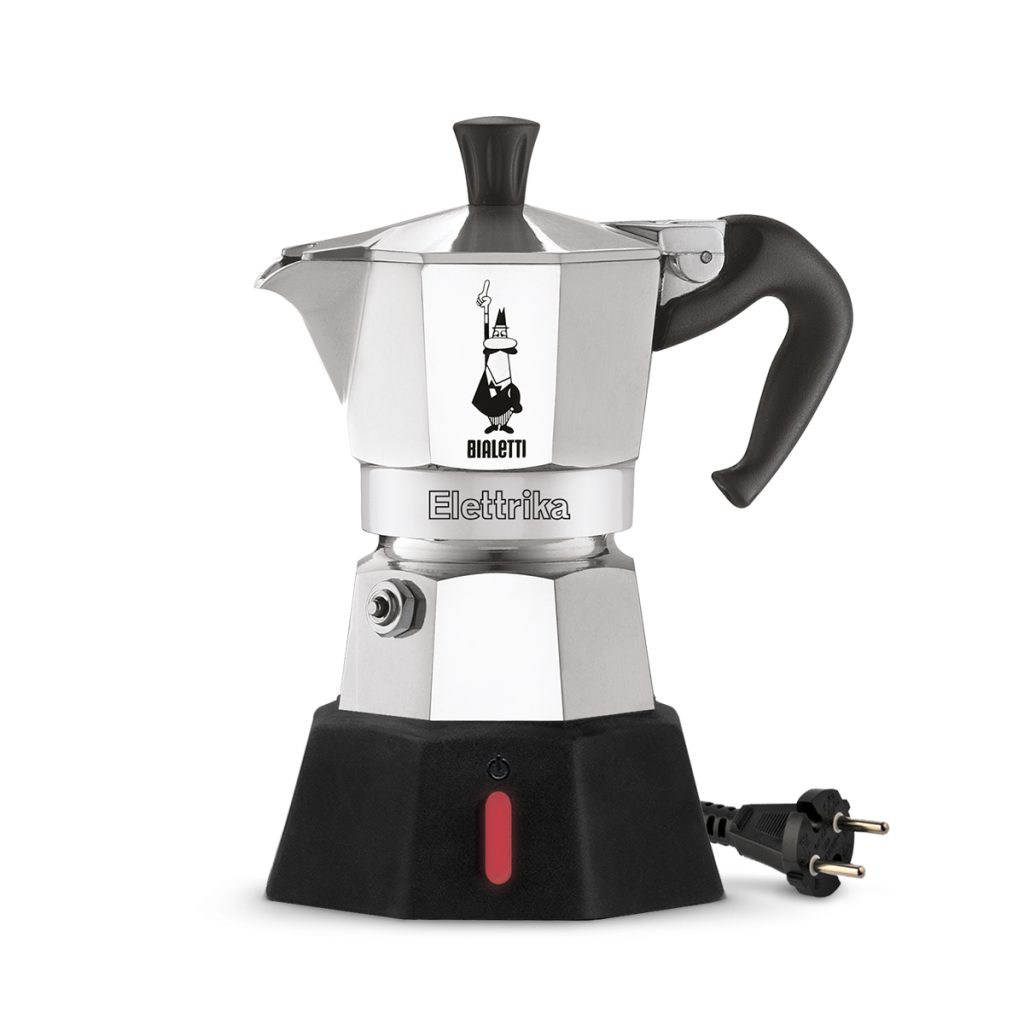
Coffee made with a Moka pot resembles espresso. It’s rich and full-bodied but has a lighter texture. Moka pot coffee is flavorful and brews quickly.
To use a Moka pot, fill it with finely ground coffee and water, then place it on the stove. As the water heats up, it turns into steam that passes through the coffee grounds, condensing at the top as brewed coffee.
Grind Size: Fine
Pros Cons
Easy to use Needs specialized equipment
Cost-effective
Fast brewing time
Great-tasting coffee
16. AeroPress

The AeroPress is a compact handheld coffee maker designed for brewing high-quality coffee quickly. Its simplicity and high level of customization allow you to experiment and find your perfect brewing method.
While there are numerous ways to brew with it, the basic process involves adding ground coffee, a filter paper, and hot water. After letting the coffee steep for a few minutes, you push down the plunger to filter the brew.
Grind size: Your choice!
Pros Cons
Extremely lightweight and portable Requires specialized equipment
Produces smooth, rich coffee Needs special filter papers
User-friendly with a short brewing time
Highly customizable
Affordable
17. Capsule Coffee Maker

Capsule coffee machines are user-friendly and highly convenient. They eliminate the need for a grinder to process coffee beans, but they also limit your control over the brewing process and require frequent cleaning and descaling.
To make a cup of coffee, just insert a pre-packaged capsule, add water, and press the start button. These highly automated machines will take care of the rest within a minute or two.
Grinding size: Coffee capsule
Pros Cons
Extremely easy to use Coffee capsules can be pricey
Fast brewing time Requires regular cleaning and descaling
Limited customization options
Uncommon Brewing Techniques
You might not have heard much about these techniques since they’re less common and the equipment can be hard to come by. If you’re looking to delve into new coffee brewing realms, one of these methods could become your next favorite!
18.Phin, Vietnam
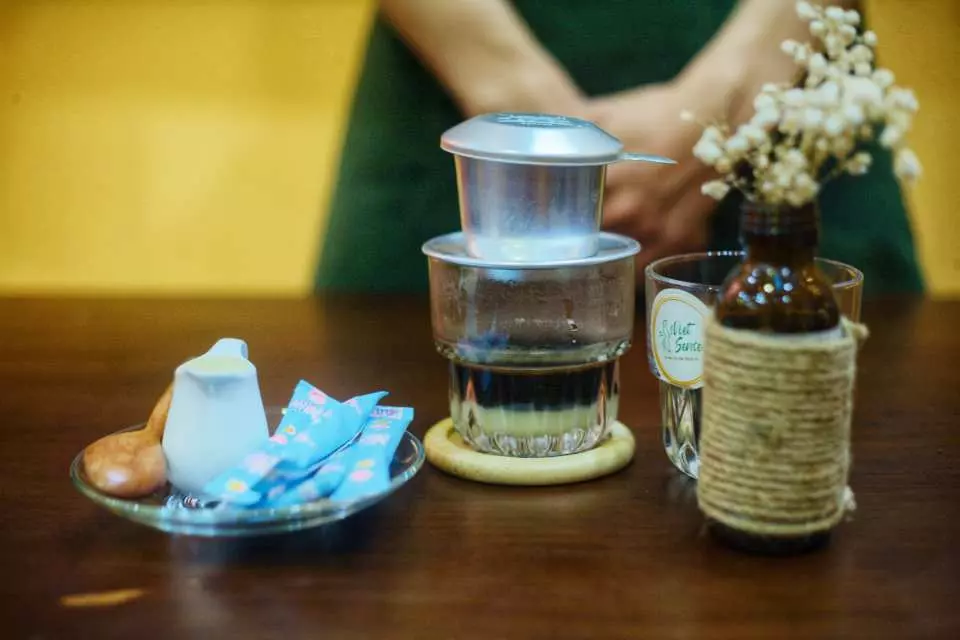
These compact and affordable metal coffee makers are popular in Vietnam for making cà phê sua dá (also known as cafe sua da), a rich black coffee mixed with sweetened condensed milk. Each brew yields a single cup of dark, velvety coffee.
Much like the pour-over method, the phin drips directly into your cup. You add coarsely ground coffee into the phin, place the perforated metal lid on top, and pour hot water over it. The brewing process takes about 10 minutes for the coffee to drip through.
Grind size: Coarse, to prevent sediment from forming at the bottom of your cup.
Pros Cons
Easy to brew Requires special equipment
Low cost May leave sediment in your cup
Produces dark, smooth coffee Brews one cup at a time
Highly portable
Reusable filter
19. Nitro Coffee
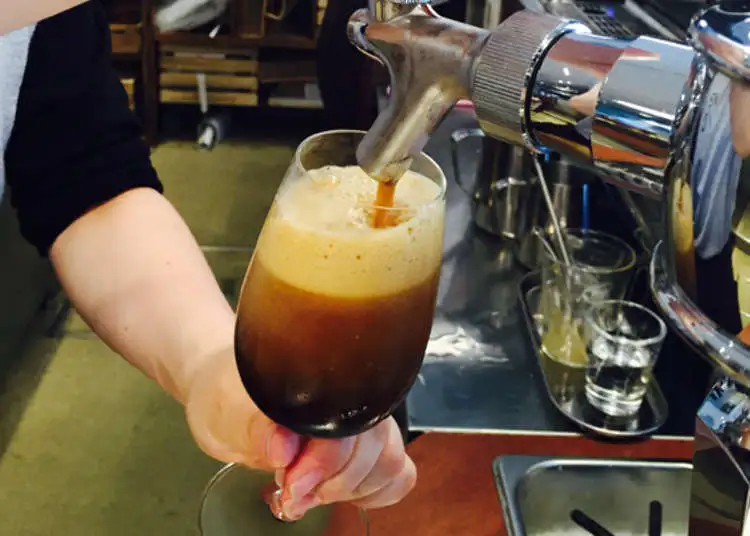
Nitro coffee is cold-brewed coffee that’s been infused with nitrogen gas. This process alters the flavor and texture of the coffee, making it sweeter and crisper while adding a slight carbonation.
Brewing nitro coffee at home can be challenging, so you might find it easier to purchase it from a café or grocery store. Some cafés even offer self-serve options similar to beer taps. As nitro coffee is a relatively new innovation, the machines available online are quite pricey and may be complex to use.
Grind Size: Coarse
Pros Cons
Great taste with an intriguing foamy texture Hard to make at home
Readily available in cafés and grocery stores Expensive
20. Puerto Rican Coffee with Milk
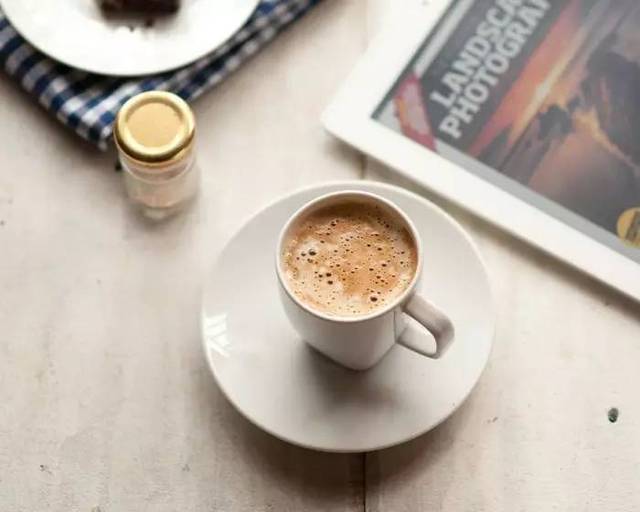
Puerto Rican cafe con leche is made using finely ground espresso powder and brewed by boiling. This method produces a sweet, creamy coffee with a high caffeine content.
To make this delicious drink, place the finely ground coffee beans into water and simmer. After the coffee has steeped, pour it into a “colador” (a triangular wooden stand covered with a cloth filter). Finally, add hot milk and coffee in a one-to-one ratio.
Grind size: Fine
Pros Cons
Produces sweet, smooth, and creamy coffee Requires special equipment
Uses a unique but simple process
Fairly portable
Low cost
Frequently Asked Questions:
What’s the best way to make coffee?
The best method for making coffee depends on your personal preference. You might prefer the robust and easy-to-make French press; the straightforward and refreshing pour-over; or the rich taste of espresso.
What’s the easiest way to brew coffee?
The most common and easiest methods for brewing coffee are pour-over, capsule machines, and drip brewers. If you’re into cold coffee, consider making cold brew.
How do you brew coffee while camping?
The easiest way to make coffee outdoors is by brewing cowboy-style or packing a lightweight pour-over setup. You could also use a stove-top percolator.
How can you make affordable coffee?
Drip brewers are very cost-effective and user-friendly. Simple and cheap pour-over gear is another option.
What’s the most impressive way to brew coffee?
You can wow your guests with a perfect shot of espresso or an intricate siphon brew.
Conclusion
There are numerous methods to brew coffee. The ideal choice for you depends on your personal taste preferences and the amount of time and money you’re willing to spend. For a straightforward and budget-friendly approach, consider using a pour-over, French press, or Moka pot. If you prefer a more automated experience, options like drip coffee makers, capsule machines, and espresso machines are available. Regardless of your preferred brewing method, we hope this guide helps you explore your options effectively.
